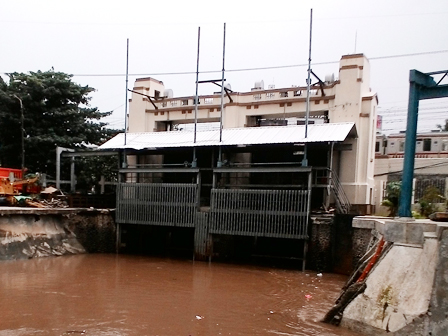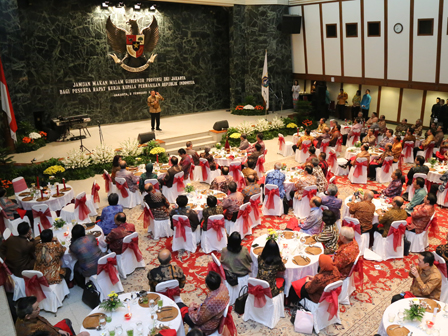Facing Rainy Season, City Conducts Data Collection on Disaster Management Resources
Reported by Aldi Geri Lumban Tobing | Translated by Nugroho Adibrata
The Jakarta Regional Disaster Mitigation Agency (BPBD) has begun to prepare for the rainy season in 2022/2023.
We're currently collecting data on all elements of the pentahelix
As quoted by the Meteorology, Climatology, and Geophysics Agency (BMKG) about the rainy season in Indonesia 2022/2023, some areas in South Jakarta and East Jakarta will begin to enter the rainy season in the second month of October 2022.
As for other regions will enter the start of the rainy season on the third day of November 2022, while the peak of the rainy season will occur from January to February 2023.
Jakarta Strengthens Synergy in Facing Rainy Season Amid CovidJakarta BPBD Executing Head, Isnawa Adji asserted that the Jakarta administration is preparing various anticipations to deal with the impact of disasters caused by the rainy season.
BPBD is also conducting data collection on potential disaster management resources in Jakarta through the website: bpbd.jakarta.go.id/tangguhbencana.
"We're currently collecting data on all elements of the pentahelix (government, business world, institutions/communities, academics, and mass media) to find out the supporting equipment owned by each element in disaster management, especially floods and fires. The things that are recorded include the number of boats, refugee tents, APAR (portable extinguishers), hydrants, ambulances, and medics they have," he expressed, at Jakarta BPBD office, as quoted by Jakarta PPID's press release, Tuesday (9/20).
Thereby, the agency invited all parties to actively participate in collecting data on disaster management resources thus they could map and organize all potential resources that support disaster management in Jakarta thus they can respond to disaster events effectively and efficiently.
"We're coordinating to collaborate with related stakeholders thus all of them can be ready and prepared for the rainy season this year," he explained.
Aside that, they are also making various efforts to anticipate the 2022/2023 rainy season and disaster management, including:
1. Disseminate the latest weather information and Water Level (TMA) conditions to the public via social media channels and websites
2. Provide early warning information regarding the increase in TMA through the Disaster Early Warning System (DEWS) and SMS Blast, as well as weather early warnings via the website, social media, WhatsApp Group, and Telegram Channel
3. Distribute facilities and infrastructure to support flood management to every sub-district located in flood-prone areas, such as boats, ring buoys, life jackets, etc
4. Prepare 267 personnel of Disaster Management Officers/TRC in every urban village spread across Jakarta to accelerate disaster coordination and management
5. Ensure the readiness of disaster management posts and evacuation sites (and their supporting equipment) at the City/Administration District, sub-district, and urban village levels to be ready and can be activated when a disaster occurs
6. Review the contingency plan for flood control in Jakarta
7. Coordinate with BNPB, BMKG, Mayors/Regents, and all related stakeholders to collaborate in disaster management
He added that the administration had prepared structural mitigation efforts to deal with the rainy season. That is by dredging channels/rivers and reservoirs through Grebek Lumpur activities (mud cleanup) and accelerating the completion of the 942-DV flood control program (construction of 9 polder systems, 4 reservoirs, 2 river revitalization, and vertical drainage).
"PUPR Ministry, the central government is also accelerating the construction of the Ciawi and Sukamahi Dams, which are targeted for completion this year, which will anticipate flooding in the Ciliwung River," he explained.
Two things are the main priorities of the administration in anticipating the impact of the rainy season, namely ensuring that there are no casualties and accelerating post-disaster recovery to return to normal conditions.
"The two main indicators conveyed by the Governor in disaster management are our reference for acting by holding three main keywords, namely: Siaga (Standby), Tanggap (Respond), and Galang (Fight)," he closed.





